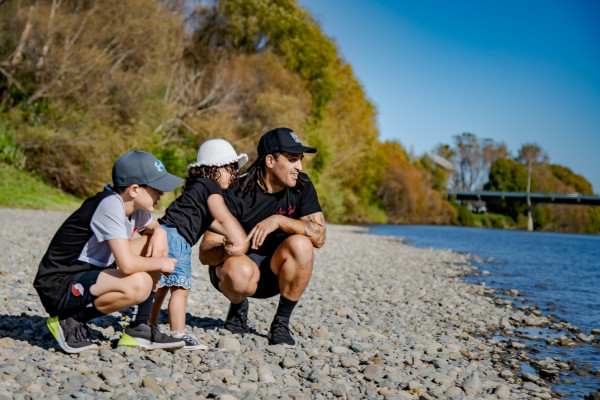Safety in, on, and around water
Drowning is a leading cause of child deaths in New Zealand. Children who drown have usually been playing alone or without an adult watching them. Common situations are family group events where children go unseen.
Being safe in the water doesn’t mean you can’t have fun, you just need to be aware of the dangers.
- If you’re in a group, make sure an adult is supervising at all times. It’s a good idea to have an active adult supervision roster where every adult takes a turn supervising so the others can do something else.
- Always keep babies and toddlers within arms’ reach when you’re in or around water. The water only has to be the depth of your little finger (around 4cm) for a little one to drown.
- Don’t rely on older children to supervise younger ones in, on, or around water. They’re easily distracted and shouldn’t be given that responsibility.
Limit distractions while you’re supervising little ones around water.
Put your phone away or on silent mode while you’re supervising a child around water. A child can drown in the time it takes to read or write a text message. If you choose to answer a ringing phone or the door, wrap your child in a towel and take them with you.
Safety in the bath
- Take everything you need to the bathroom before your child is in the bath.
- Watch the bath while it fills, and empty it as soon as your child is out.
- Always make sure an adult (or responsible teenager 14 years and over) stays with your child when they’re in the bath.
- Make sure the plug is out and out of reach and there aren’t toys left in the tub that could stop the water from emptying.
- Keep a hand on your young baby constantly during bath time to keep them safe.
- Bath seats can be dangerous because they may tip and trap a baby under the water.
- Older babies and children need to be actively supervised while they’re in the bath too.
- Keep the bath plug up high when you’re not using it.
Safety at the beach, lake or river

- Always stay in the water with young children.
- Actively supervise children if they're paddling or playing at the water’s edge.
- It’s not safe to rely on flotation aids like air rings or armbands when swimming with your child, especially in rivers, lakes or the sea.
- To keep your children safe, make sure you keep them within sight and reach, and away from strong currents and rips.
- Life jackets must be worn on a boat. Young children in any sort of boat must always wear a life jacket which is the right size and ideally has a crotch strap.
Never leave your child alone in, on, or near water, not even for a second.
Safety in swimming pools
- Talk with children about water safety rules, including waiting until an adult can get in the water with them, and not to run near pools.
- Small children need to be supervised when playing in paddling pools.
- Actively supervise children near any water. Have an adult roster and hand over from one supervising adult to another.
- Remember flotation aids like arm bands or water rings don't keep your children safe in the water.
- Always empty a paddling pool and turn it upside down to prevent water collection.
Identifying water hazards in and around the house and garden
- It only takes a few centimetres of water to become a hazard.
- Make sure swimming pools are fully fenced and comply with legal requirements (your local council can provide more information about these requirements). Make sure safety latches are working, gates are never left open, and fences are secure.
- Spa pools over 760mm high don’t need a fence, but must:
- have a lockable cover
- be clear of objects like steps that could make the pool “easily climbable” by children.
- Empty water from buckets and containers as soon as you’ve finished using them, and check your house and garden for anything that can collect rainwater. Turn these containers upside down so water can't collect in them.
- Close laundry, bathroom and toilet doors.
- Keep the nappy bucket off the floor so your child can’t get to it, and check the lid fits securely.
- Fish ponds, stock troughs, drinking ponds and other ornamental containers of water are a risk to children.
Teaching children to be safe around water
- Giving children positive and fun experiences in the water from an early age will help them learn essential skills to keep them safe. In many places, you can take your baby to water confidence classes when they're six months old.
- Help children understand while water is fun, it can also be dangerous.
- Small babies should wear a swimming nappy. Regular nappies aren't appropriate because they hold water and can become very heavy.
- Putting children in special swimming clothing teaches them that visits to the pool require special clothes and they can’t just jump into any water they find.
